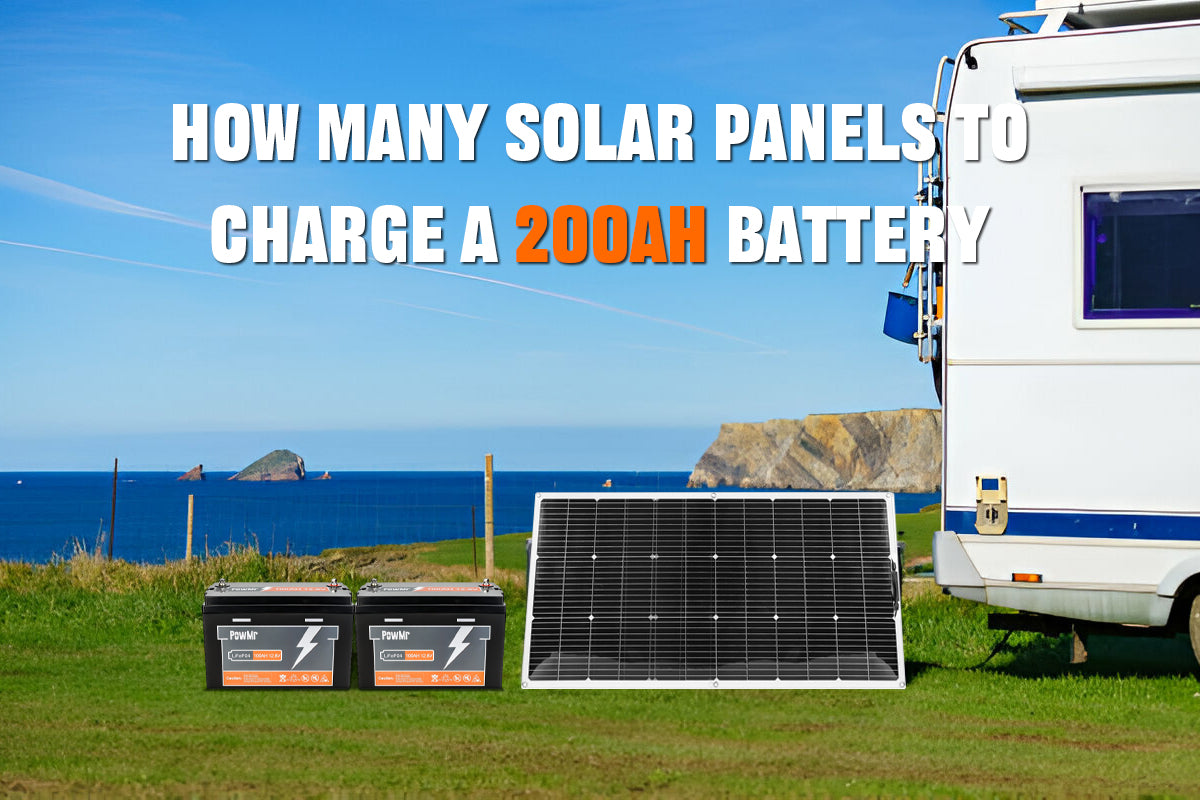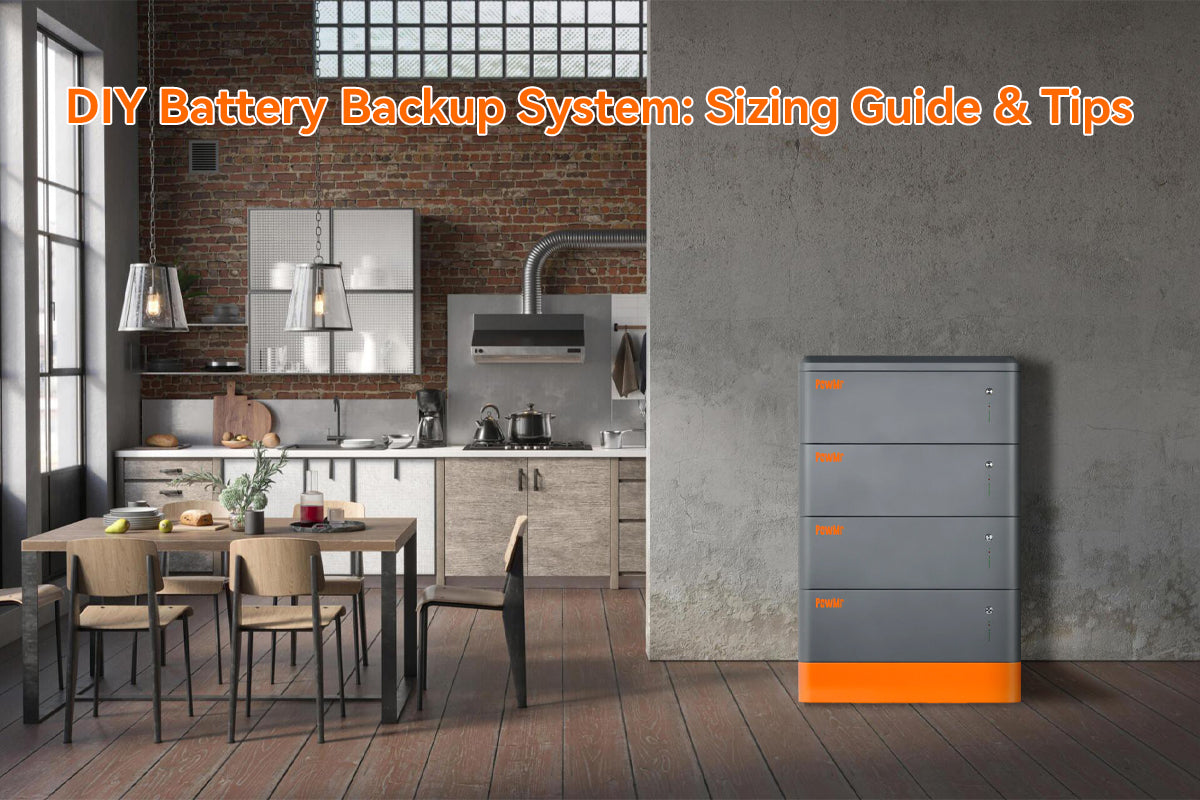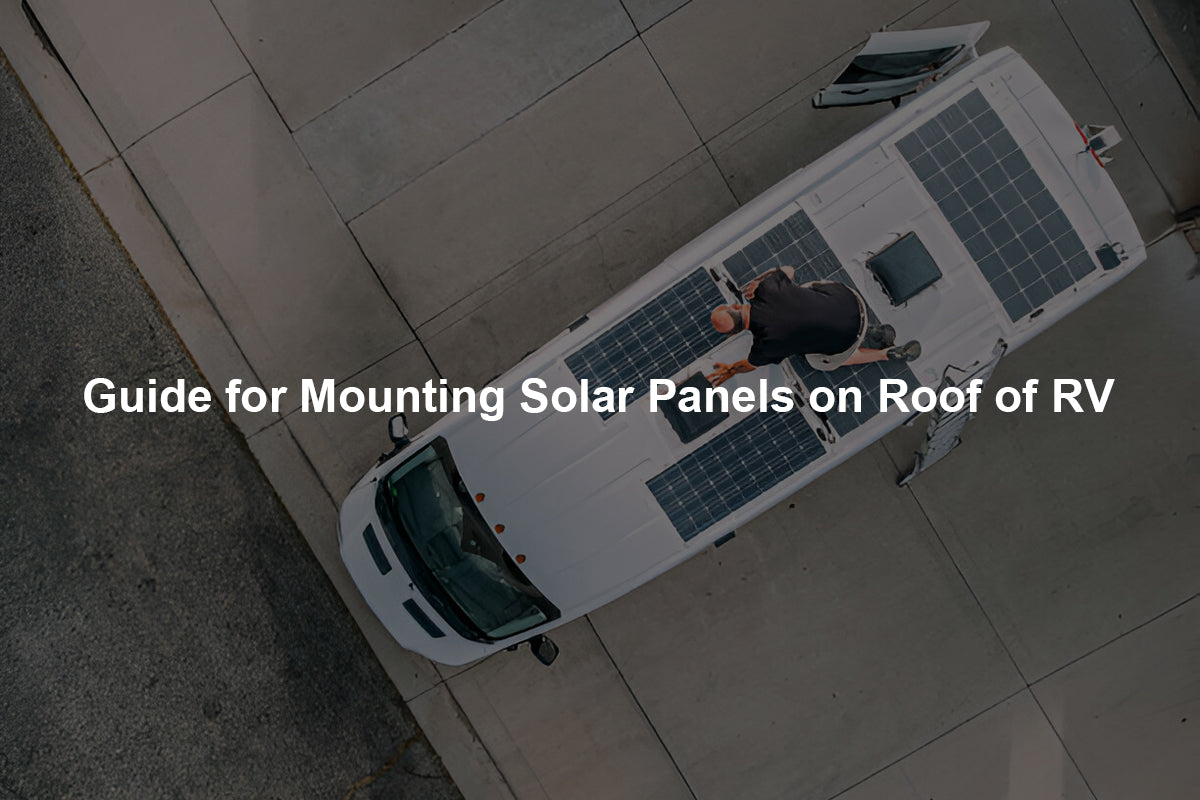ในการแสวงหาการใช้พลังงานทดแทน พลังงานแสงอาทิตย์โดดเด่นในฐานะทางออกที่ยั่งยืน แต่ถ้าคุณสงสัยว่าต้องใช้ แผงโซลาร์เซลล์ กี่แผงในการชาร์จ แบตเตอรี่ 200Ah อย่างมีประสิทธิภาพ มีหลายปัจจัยที่ต้องพิจารณา มาดูรายละเอียดเกี่ยวกับการกำหนดขนาดแผงโซลาร์เซลล์และการเพิ่มประสิทธิภาพของมันกัน
- ปัจจัยที่ต้องพิจารณาเมื่อกำหนดขนาดแผงโซลาร์เซลล์
- ปัจจัยที่ 1 - แบตเตอรี่ 200Ah มีพลังงานกี่ kWh
- ปัจจัยที่ 2 - ชั่วโมงแสงอาทิตย์สูงสุดในพื้นที่ของคุณคือเท่าไร
- แผงโซลาร์เซลล์กี่วัตต์ที่ต้องใช้ในการชาร์จแบตเตอรี่ 200Ah - การคำนวณ
- ขั้นตอนที่ 1 - ขนาดแผงโซลาร์เซลล์ที่ใช้ชาร์จแบตเตอรี่ลิเธียม 200Ah
- ขั้นตอนที่ 2 - แผงโซลาร์เซลล์ผลิตวัตต์ได้กี่วัตต์
- ขั้นตอนที่ 3 - ต้องใช้แผงโซลาร์เซลล์กี่แผงในการชาร์จแบตเตอรี่ 200Ah
- ปัจจัยอื่น ๆ ที่มีผลต่อขนาดแผงโซลาร์เซลล์สำหรับแบตเตอรี่ 200Ah
ปัจจัยที่ต้องพิจารณาเมื่อกำหนดขนาดแผงโซลาร์เซลล์
การผลิตไฟฟ้าของแผงโซลาร์เซลล์ไม่แน่นอนเนื่องจากสภาพแวดล้อมตามธรรมชาติและปัจจัยอื่น ๆ เช่น การวางแผง, ความสะอาด และประสิทธิภาพทางเทคนิค เราจะพูดถึง ปัจจัยสำคัญ และ ประมาณจำนวนแผงโซลาร์เซลล์ที่ต้องใช้ในการชาร์จแบตเตอรี่ 200Ah
ปัจจัยที่ 1 - แบตเตอรี่ 200Ah มีพลังงานกี่ kWh
สิ่งแรกที่ต้องพิจารณาคือ ความจุแบตเตอรี่ ซึ่งวัดเป็น Ah หรือ kWh ซึ่งบ่งบอกถึงพลังงานที่ต้องใช้ในการชาร์จแบตเตอรี่ให้เต็ม การวัดนี้ช่วยให้ประมาณพลังงานที่จำเป็นสำหรับระบบแผงโซลาร์เซลล์ของคุณได้
เพื่อความสะดวกในการคำนวณต่อไป จำเป็นต้อง แปลง Ah เป็น kWh
ตัวอย่างเช่น แบตเตอรี่ 12V 200Ah จะมีความจุ 2.4 kWh (200Ah * 12V) และ แบตเตอรี่ 24V 200Ah จะมีความจุ 4.8 kWh (200Ah * 24V)
เราจะคำนวณจำนวนแผงโซลาร์เซลล์ที่ต้องใช้เพื่อ ชาร์จเต็ม แบตเตอรี่ 200Ah โดยไม่คำนึงถึงสถานะการชาร์จ (SOC) ของแบตเตอรี่ สมมติว่าแบตเตอรี่มีประจุเหลือศูนย์ก่อนเชื่อมต่อแผงโซลาร์เซลล์
ปัจจัยที่ 2 - ชั่วโมงแสงอาทิตย์สูงสุดในพื้นที่ของคุณคือเท่าไร
ชั่วโมงแสงอาทิตย์สูงสุด หมายถึง ชั่วโมงในแต่ละวันที่ ความเข้มของแสงอาทิตย์เฉลี่ยถึง 1000 วัตต์ต่อตารางเมตร (W/m²) ในช่วงเวลานี้ แผงโซลาร์เซลล์สามารถผลิตไฟฟ้าได้สูงสุด
จำนวนชั่วโมงแสงอาทิตย์สูงสุดจะแตกต่างกันไปตามสถานที่ ฤดูกาล และสภาพอากาศ เพื่อความง่าย สมมติว่ามีแสงอาทิตย์โดยตรงเฉลี่ย 5 ชั่วโมง ต่อวัน
แผงโซลาร์เซลล์กี่วัตต์ที่ต้องใช้ในการชาร์จแบตเตอรี่ 200Ah - การคำนวณ
จากรายละเอียดทางเทคนิคสู่การใช้งานจริง มาพูดถึงการตั้งค่าแผงโซลาร์เซลล์ที่จำเป็นสำหรับการชาร์จแบตเตอรี่ 200Ah ก่อนอื่นเราจะกำหนด กำลังวัตต์ที่จำเป็นสำหรับระบบแผงโซลาร์เซลล์ จากนั้นจะพิจารณา ประสิทธิภาพของแผงโซลาร์เซลล์ เพื่อคำนวณจำนวนแผงที่ต้องใช้
ขั้นตอนที่ 1 - ขนาดแผงโซลาร์เซลล์ที่ใช้ชาร์จแบตเตอรี่ลิเธียม 200Ah
การรู้ความจุแบตเตอรี่และชั่วโมงแสงอาทิตย์สูงสุดช่วยให้เราคำนวณกำลังวัตต์ที่ต้องการของระบบแผงโซลาร์เซลล์เพื่อชาร์จแบตเตอรี่ 200Ah หรือขนาดของระบบแผงโซลาร์เซลล์ โดยใช้สูตรนี้:
ขนาดระบบแผงโซลาร์เซลล์ (W) = ความจุแบตเตอรี่ (Wh) / ชั่วโมงแสงอาทิตย์ (H)
จากตัวอย่างก่อนหน้า สมมติว่ามี 5 ชั่วโมงแสงอาทิตย์สูงสุด สำหรับแบตเตอรี่ 24V 200Ah ขนาดระบบแผงโซลาร์เซลล์จะเป็น 900W (4800Wh / 5h) สำหรับแบตเตอรี่ 12V 200Ah คุณจะต้องใช้แผงโซลาร์เซลล์ขนาด 480 วัตต์ (2400Wh / 5h)
ขั้นตอนที่ 2 - แผงโซลาร์เซลล์ผลิตวัตต์ได้กี่วัตต์
เราสามารถคำนวณ ขนาดระบบแผงโซลาร์เซลล์ โดยสมมติว่ากำลังไฟฟ้าจริงที่แผงโซลาร์เซลล์ผลิตได้ เท่ากับกำลังไฟฟ้าที่ระบุ
การผลิตรายวัน = กำลังวัตต์ของแผงโซลาร์เซลล์ * ชั่วโมงแสงอาทิตย์สูงสุดในพื้นที่
ตัวอย่างเช่น สมมติว่ามี 5 ชั่วโมงแสงอาทิตย์สูงสุด แผงโซลาร์เซลล์ขนาด 300W สามารถผลิตได้ 1500Wh ต่อวัน และแผงโซลาร์เซลล์ขนาด 200W ผลิตได้ 1000Wh ต่อวัน
ขั้นตอนที่ 3 - ต้องใช้แผงโซลาร์เซลล์กี่แผงในการชาร์จแบตเตอรี่ 200Ah
เมื่อเรารู้ปริมาณพลังงานแสงอาทิตย์ที่ต้องใช้ในการชาร์จแบตเตอรี่ 200Ah และกำลังวัตต์ที่แผงโซลาร์เซลล์แต่ละแผงผลิตได้ เราก็เพียงแค่หารจำนวนแรกด้วยจำนวนหลัง:
จำนวนแผงโซลาร์เซลล์ = ขนาดระบบแผงโซลาร์เซลล์ที่ต้องการ / กำลังไฟฟ้าที่แผงโซลาร์เซลล์ผลิตได้
ดังนั้น สำหรับแบตเตอรี่ 12V 200Ah คุณจะต้องใช้แผงโซลาร์เซลล์ขนาด 200W จำนวน สามแผง สำหรับการชาร์จแบตเตอรี่ 24V 200Ah ใน 5 ชั่วโมง จะต้องใช้แผงโซลาร์เซลล์ขนาด 300W จำนวน สี่แผง
| แบตเตอรี่ 200Ah | พลังงาน (Wh) | กำลังวัตต์ที่ต้องการ | แผง @100W | แผง @200W | แผง @300W | แผง @400W |
|---|---|---|---|---|---|---|
| 12V 200Ah | 2,400 Wh | < 480W | 5 × 100W | 3 × 200W | 2 × 300W | 2 × 400W |
| 24V 200Ah | 4,800 Wh | < 960W | 10 × 100W | 5 × 200W | 4 × 300W | 3 × 400W |
| 48V 200Ah | 9,600 Wh | < 1920W | 20 × 100W | 10 × 200W | 7 × 300W | 5 × 400W |
แน่นอนว่าตัวอย่างเหล่านี้คำนวณจำนวนขั้นต่ำของแผงโซลาร์เซลล์ที่ต้องใช้ในการชาร์จแบตเตอรี่ 200Ah ภายใน 5 ชั่วโมงภายใต้สภาพแวดล้อมที่เหมาะสม
ความต้องการจริงอาจแตกต่างกันไปขึ้นอยู่กับปัจจัยเช่น ประสิทธิภาพของแผงโซลาร์เซลล์ สภาพอากาศในพื้นที่ และการตั้งค่าระบบ คุณอาจต้องปรับกำลังวัตต์ จำนวนแผง รวมถึง ประเภทของการเชื่อมต่อ
นอกจากนี้ ยังมีข้อควรระวังสำคัญบางประการที่ควรจำไว้
ปัจจัยอื่น ๆ ที่มีผลต่อขนาดแผงโซลาร์เซลล์สำหรับแบตเตอรี่ 200Ah
เมื่อออกแบบระบบแผงโซลาร์เซลล์ แนะนำให้เริ่มจากการคำนวณขนาดแผงขั้นต่ำที่ต้องการ จากนั้น ทดสอบระบบของคุณและปรับตามสภาพจริง เนื่องจากการออกแบบระบบโซลาร์เซลล์ที่ทำงานได้ตามคาดหมายอาจเป็นเรื่องท้าทายเนื่องจากหลายปัจจัย:
ประสิทธิภาพของระบบ
ความต้านทานของสายไฟ การสูญเสียพลังงานระหว่างการชาร์จและการคายประจุ และประสิทธิภาพของทั้งแผงโซลาร์เซลล์และตัวควบคุมการชาร์จล้วนส่งผลต่อระบบ เนื่องจากปัจจัยเหล่านี้ พลังงานที่ผลิตโดยแผงโซลาร์เซลล์ทั้งหมดจะไม่ถึงแบตเตอรี่ ส่งผลให้เวลาชาร์จช้าลง
ความแปรปรวนของแสงอาทิตย์
กำลังไฟฟ้าจริงของแผงโซลาร์เซลล์เปลี่ยนแปลงตลอดวันเนื่องจากปัจจัยเช่น เมฆ มุมของดวงอาทิตย์ และเวลาของวัน สิ่งเหล่านี้ลดปริมาณแสงอาทิตย์ที่มีประสิทธิภาพถึงแผง ส่งผลให้ความเร็วในการชาร์จต่ำกว่าที่คาดไว้ เพื่อให้มั่นใจว่าการชาร์จแบตเตอรี่เป็นไปอย่างน่าเชื่อถือแม้มีความแปรปรวนเหล่านี้ มักจำเป็นต้องมีแผงโซลาร์เซลล์เพิ่มเติมเพื่อชดเชยการผลิตที่ลดลง
ประเภทของตัวควบคุมการชาร์จโซลาร์เซลล์
ในโลกจริง แผงโซลาร์เซลล์มักทำงานที่แรงดันไฟฟ้าสูงกว่าแรงดันชาร์จของแบตเตอรี่ และวิธีที่ตัวควบคุมการชาร์จโซลาร์เซลล์แต่ละประเภทจัดการพลังงานนี้แตกต่างกัน
ตัวควบคุม PWM ทำงานได้ดีที่สุดเมื่อแรงดันของแผงใกล้เคียงกับแรงดันของแบตเตอรี่ แต่จะสูญเสียแรงดันส่วนเกิน ใช้พลังงานจากแผงเพียงประมาณ 60–70% ในขณะที่ ตัวควบคุม MPPT จะแปลงแรงดันส่วนเกินเป็นกระแสเพิ่มเติม เพิ่มประสิทธิภาพประมาณ 30%
ดังนั้น ระบบที่ใช้ตัวควบคุม PWM มักต้องการแผงโซลาร์เซลล์มากกว่าระบบที่ใช้ MPPT เพื่อให้ได้ประสิทธิภาพการชาร์จเท่ากัน
โพสต์ที่เกี่ยวข้อง: บทบาทของตัวควบคุมการชาร์จโซลาร์เซลล์ & วิธีการทำงาน
การใช้งานแบตเตอรี่
ขนาดของแผงโซลาร์เซลล์สามารถปรับได้ตามนิสัยการใช้แบตเตอรี่และความลึกของการคายประจุ การคายประจุแบตเตอรี่ 200Ah จนหมดจะต้องใช้แผงมากขึ้นเพื่อชาร์จอย่างมีประสิทธิภาพ ในขณะที่การคายประจุตื้นในแต่ละวันช่วยให้ใช้แผงขนาดเล็กลงได้ เพื่อให้มั่นใจว่าการชาร์จเป็นไปอย่างน่าเชื่อถือในกรณีที่มีการคายประจุลึกบ่อยครั้งหรือช่วงเวลาที่มีเมฆมาก ระบบอาจต้องปรับและอาจต้องมีขนาดใหญ่ขึ้นตามความเหมาะสม
คำถามที่พบบ่อย
ฉันสามารถชาร์จแบตเตอรี่ 200Ah ด้วยแผงโซลาร์เซลล์แผงเดียวได้ไหม?
ได้ แต่ต้องเป็นแผงโซลาร์เซลล์ที่มีกำลังวัตต์เพียงพอที่จะผลิตพลังงาน (วัตต์-ชั่วโมง) เพื่อชาร์จแบตเตอรี่ภายในเวลาที่คุณต้องการ
เมื่อออกแบบชุดแผงโซลาร์เซลล์ คุณสามารถเลือกใช้แผงขนาดเล็กหลายแผงหรือแผงขนาดใหญ่จำนวนน้อย แผงขนาดเล็กหลายแผงให้ความยืดหยุ่นในการติดตั้งและทำงานได้ดีกว่าเมื่อมีเงาบางส่วน แผงขนาดใหญ่มีแนวโน้มที่จะคุ้มค่ากว่าและมีการเชื่อมต่อน้อยลง ซึ่งลดจุดที่อาจเกิดความล้มเหลวและความซับซ้อนของระบบ
ควรใช้ตัวควบคุมการชาร์จโซลาร์เซลล์ขนาดเท่าไรสำหรับแบตเตอรี่ 200Ah?
ขนาดของตัวควบคุมการชาร์จโซลาร์เซลล์ขึ้นอยู่กับทั้งกำลังไฟฟ้าของแผงโซลาร์เซลล์และแรงดันของระบบ เพื่อคำนวณกระแสขั้นต่ำ ให้หารกำลังวัตต์ของแผงด้วยแรงดันของแบตเตอรี่ จากนั้นเลือกตัวควบคุมที่มีเรตติ้งสูงกว่านี้เล็กน้อยเพื่อความปลอดภัยและความน่าเชื่อถือ
ตัวอย่างเช่น หากคุณต้องการ ตัวควบคุมการชาร์จ 25A เพื่อชาร์จแบตเตอรี่ 200Ah ด้วยแผงโซลาร์เซลล์ 600W คุณสามารถเลือก ตัวควบคุม 40A เพื่อลดเวลาชาร์จเหลือ 5 ชั่วโมง
โพสต์ที่เกี่ยวข้อง: แบตเตอรี่ 200Ah ใช้เวลาชาร์จนานเท่าไร
ควรใช้ขนาดอินเวอร์เตอร์เท่าไรสำหรับแบตเตอรี่ 200Ah
ขนาดอินเวอร์เตอร์ขึ้นอยู่กับความต้องการโหลดของคุณมากกว่าความจุของแบตเตอรี่เพียงอย่างเดียว แม้ว่าแบตเตอรี่ 200Ah จะรองรับอินเวอร์เตอร์ได้หลากหลาย แต่กำลังไฟฟ้ารวมของอุปกรณ์ที่เชื่อมต่อกับอินเวอร์เตอร์จะกำหนดขนาดอินเวอร์เตอร์ที่คุณต้องการและระยะเวลาที่แบตเตอรี่ 200Ah จะใช้งานได้ ยิ่งใช้เครื่องใช้ไฟฟ้ามากหรือมีกำลังวัตต์สูง แบตเตอรี่ 200Ah จะหมดเร็วขึ้น
อินเวอร์เตอร์คลื่นไซน์บริสุทธิ์ 2000W เป็นตัวเลือกที่นิยม มันแปลงพลังงาน DC จากแบตเตอรี่ 12V 200Ah เพื่อใช้งานโหลด 1,000W ได้ประมาณ 2.4 ชั่วโมงในทางทฤษฎี



